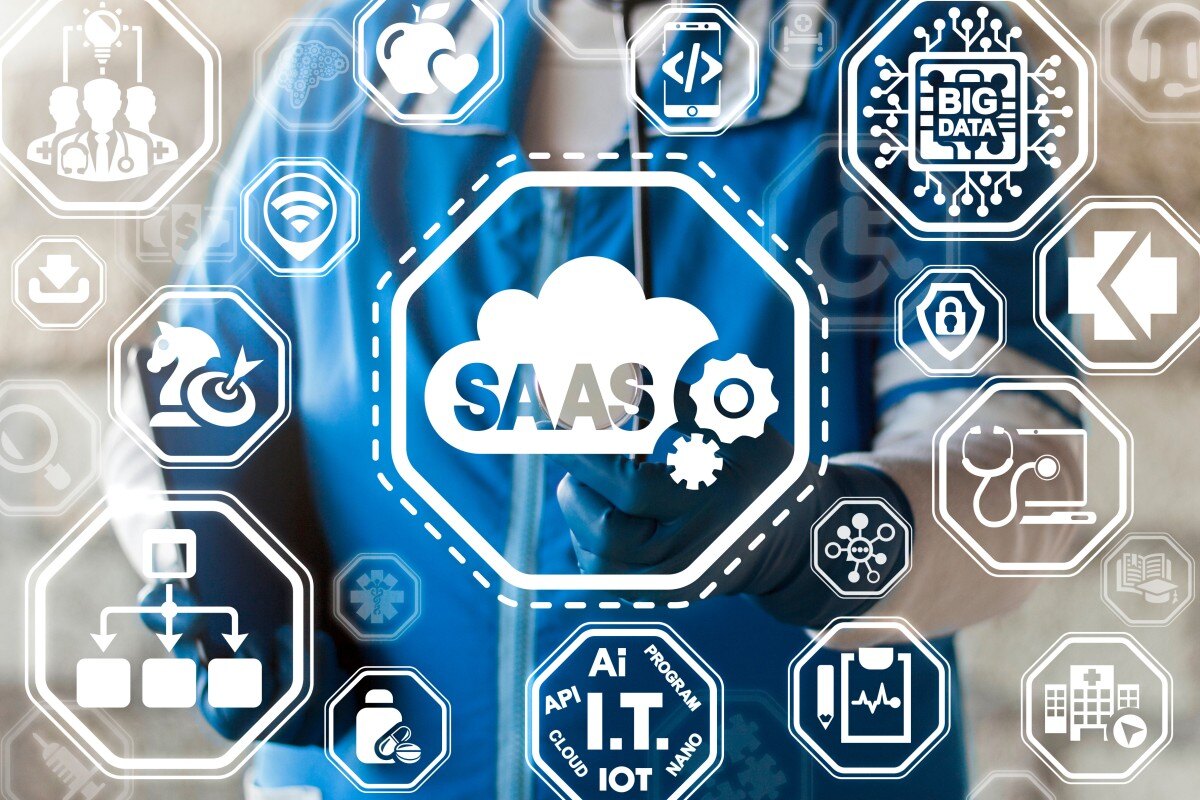Using Patient Education Videos to Support Preventive Care Strategies
As a healthcare provider, you know prevention saves lives. From routine screenings and lifestyle counseling to vaccinations and early detection,...
6 min read
Robert McDermott Nov 21, 2024 12:30:00 PM
 In the last 100 meters of a marathon, runners rarely look back. What’s behind them doesn't matter as much as staying ahead. In healthcare, staying ahead means more than just delivering exceptional patient care—it requires the right technology to power your operations. Outdated, on-premise systems are no match for the demands of modern workflows, regulatory compliance, and the ever-evolving revenue cycle. Enter healthcare Software-as-a-Service (SaaS) and cloud solutions: agile, cost-effective, and built to transform the way you manage your practice.
In the last 100 meters of a marathon, runners rarely look back. What’s behind them doesn't matter as much as staying ahead. In healthcare, staying ahead means more than just delivering exceptional patient care—it requires the right technology to power your operations. Outdated, on-premise systems are no match for the demands of modern workflows, regulatory compliance, and the ever-evolving revenue cycle. Enter healthcare Software-as-a-Service (SaaS) and cloud solutions: agile, cost-effective, and built to transform the way you manage your practice.
Quick Links:
Along with much of the world, the healthcare industry has undergone a remarkable transformation over the past few decades, driven largely by technology, regulatory shifts, and the need for operational efficiency. This evolution has set the stage for the widespread adoption of SaaS and cloud-based solutions.
In the past, healthcare relied heavily on paper-based systems for patient records, billing, prescriptions, and communication. These processes were slow, error-prone, and challenging to scale, leading to inefficiencies that hampered the quality of care and financial management. These systems also hinged on communication methods, like time-consuming telephone calls and the potential for important paperwork to be lost, damaged, or destroyed, especially prescriptions.
The 1990s saw the introduction of electronic medical records (EMRs), marking the healthcare industry’s first significant step toward digital transformation. Early EMRs, however, were often on-premise solutions, requiring significant upfront investments in hardware, software, and IT support. While these systems improved record-keeping, they were costly and inflexible.
Then, in the early 2000s there was a surge in government initiatives, such as the Health Information Technology for Economic and Clinical Health (HITECH) Act in the U.S., which incentivized healthcare providers to adopt electronic health records (EHRs). These regulations created a demand for more affordable, scalable solutions to not only meet compliance requirements but also improve patient care and outcomes.
Cloud computing entered the picture and helped SaaS in healthcare gain major traction. Practices overburdened with the cost and upkeep of on-premise solutions could, instead, access advanced tools without heavy upfront investments, continuous upgrades, and allocating resources to IT and security. The ability to securely store and access data remotely became especially appealing for organizations seeking to improve workflow efficiency and data-sharing capabilities across facilities.
Then, in 2020, the COVID-19 pandemic highlighted the need for scalable, agile technology in healthcare. Providers quickly adopted telehealth, remote monitoring, and digital communication tools—most of which were powered by cloud-based platforms. SaaS solutions became critical for supporting the rapid shifts in patient care delivery, staff coordination, and revenue cycle management (RCM).
And now? The introduction of AI and automation are heralding another significant transformation in how healthcare practices use technology. Because modern healthcare SaaS platforms emphasize seamless integration and interoperability with other systems, they are indispensable for streamlining workflows and optimizing RCM.
Further, advances in artificial intelligence and automation are enhancing those capabilities, allowing organizations to employ coding assistance, process claims, verify insurance, safely and accurately ePrescribe, and collect payments with unprecedented efficiency.
There’s no doubt that healthcare is changing for a variety of reasons from increased populations being served by fewer providers to more challenging comorbidities and changing patient needs and demographics. However, healthcare SaaS and cloud-based solutions have become foundational to not only meeting these unique challenges but also improving both patient care and operational performance.
 Healthcare SaaS vs. Traditional Software: Why Cloud Solutions Are the Future
Healthcare SaaS vs. Traditional Software: Why Cloud Solutions Are the FutureThe shift toward cloud-based Software-as-a-Service (SaaS) solutions in healthcare isn’t just a trend—it’s a response to the limitations of traditional software and the evolving needs of healthcare organizations. Below, we compare and contrast these two approaches to illustrate why SaaS solutions are paving the way for the future of healthcare workflow and revenue cycle management (RCM).
Traditional Software:
SaaS Solutions:
Traditional Software:
SaaS Solutions:
Traditional Software:
SaaS Solutions:
Traditional Software:
SaaS Solutions:
Traditional Software:
SaaS Solutions:
Simply put, the agility, cost efficiency, and scalability of SaaS solutions make them indispensable for healthcare organizations looking to improve workflow efficiency and RCM. As healthcare becomes increasingly digital and patient-centric, SaaS platforms offer the flexibility and innovation necessary to stay ahead of industry demands. Traditional software served its purpose, but cloud-based solutions are shaping the next era of healthcare technology.
Artificial intelligence (AI) and automation tools are transforming the capabilities of healthcare SaaS solutions, enabling organizations to tackle inefficiencies, reduce errors, and enhance patient and provider experiences. Seamlessly integrating these advanced technologies into both workflows and existing practice management software means healthcare SaaS platforms can deliver tools that improve workflows and optimize healthcare RCM.
SaaS solutions simplify complex, time-consuming tasks, empowering staff to focus on high-value activities. Key contributions include:
AI-driven tools automate appointment scheduling, reminders, and follow-ups, reducing no-shows and improving patient satisfaction. Chatbots and virtual assistants provide 24/7 support, answering patient queries without burdening administrative staff.
Natural language processing (NLP) tools assist in capturing and transcribing provider notes, reducing the time spent on documentation while ensuring accuracy and compliance with regulatory standards.
Automation helps prioritize tasks, route them to the appropriate staff, and track their completion, ensuring efficient workflows across departments.
RCM is critical for healthcare organizations, but managing claims, billing, and payments can be fraught with inefficiencies. SaaS platforms infused with AI and automation address these challenges head-on:
AI supported automated insurance verification verifies coverage in real time, reducing delays and errors that can lead to claim denials.
Automation identifies potential errors in claims before submission, increasing the likelihood of first-pass approval and expediting payment cycles.
AI-driven analytics optimize payment collections by identifying healthcare payment trends, predicting patient payment behavior, and suggesting strategies to improve financial outcomes.
AI-powered healthcare SaaS platforms go beyond automation, offering actionable insights that drive better decisions:
AI identifies patterns in patient data and practice management, like revenue analytics, to predict future healthcare needs, helping providers proactively manage care and reduce costs.
Automation tracks and analyzes healthcare workflows to pinpoint bottlenecks and inefficiencies, enabling organizations to continually refine processes.
AI tools assess historical revenue data to provide accurate financial forecasts, helping organizations plan for growth and mitigate risks.
As healthcare becomes increasingly data-driven, the role of AI and automation in SaaS solutions will only grow. These technologies enable providers to operate more efficiently, improve financial performance, and deliver better patient experiences. By adopting healthcare SaaS platforms equipped with AI and automation, organizations position themselves to meet the demands of an evolving industry with agility and precision.
 Top Benefits of Healthcare SaaS
Top Benefits of Healthcare SaaSHealthcare SaaS solutions are revolutionizing the way organizations manage workflows, improve financial performance, and deliver patient care. Here’s a summary of the key benefits that make these platforms essential in today’s healthcare environment:
Healthcare SaaS platforms grow with your organization, allowing you to add users, features, or storage as needed without significant infrastructure investments. You can then adapt to changing demands, expand services, or manage seasonal surges in patient volume.
With subscription-based pricing models, healthcare SaaS eliminates upfront costs for hardware and software. Maintenance, updates, and IT support are typically included, reducing ongoing expenses and making advanced technology accessible to organizations of all sizes.
Healthcare SaaS providers prioritize data protection with advanced encryption, regular updates, and HIPAA compliance. Cloud-based systems also offer robust disaster recovery and cloud backup solutions, safeguarding sensitive patient and financial data.
Cloud-based SaaS platforms enable secure, real-time access to data from any device with an internet connection. Care teams, administrative staff, and external stakeholders, can communicate seamlessly, supporting more cohesive and efficient operations. Similarly, healthcare providers can do things like prescribe on the fly, improving efficiency and maximizing time with patients.
Healthcare SaaS solutions are designed to integrate seamlessly with existing practice management systems. By facilitating interoperability, they break down data silos and streamline workflows for efficiency, ultimately improving both operational efficiency and patient outcomes.
Healthcare SaaS solutions empower healthcare organizations to stay competitive, reduce costs, and deliver better care—all while meeting the demands of a rapidly changing industry.
Ready to leverage a healthcare workflow platform that can help you achieve the security, and flexibility you need while delivering efficiency, revenue, and improved patient outcomes?
Book a demo with the iCoreConnect team today!

As a healthcare provider, you know prevention saves lives. From routine screenings and lifestyle counseling to vaccinations and early detection,...

There’s no denying that the AI boom is here. The American Medical Association reports that 66% of physicians are currently using artificial...

If only managing your practice’s revenue cycle came with a crystal ball. You could spot claim denials before they happen, predict when patients might...

Recent healthcare cyber attacks have highlighted the importance of not just technology in healthcare but also software. A good number of remaining...

Think of your revenue cycle like a patient’s health. When symptoms appear, like delayed payments, frequent claim denials, or a growing pile of...

It wasn’t all that long ago that the mere mention of “the cloud” drew puzzled looks from folks weary of tech that follows you everywhere. And yet,...